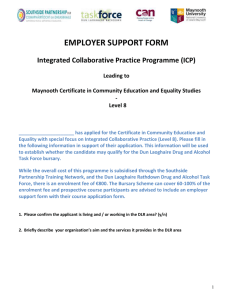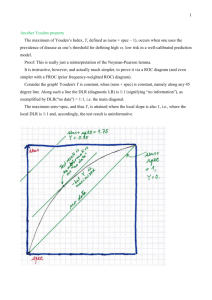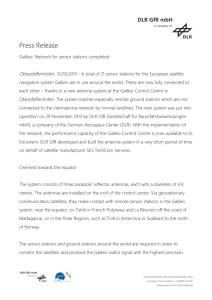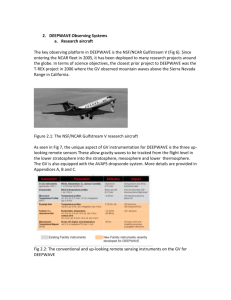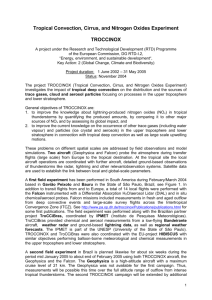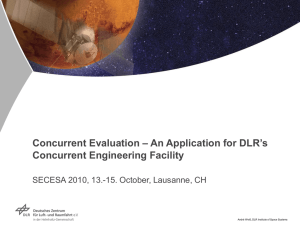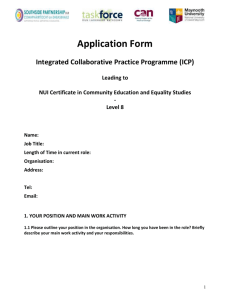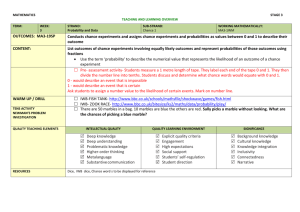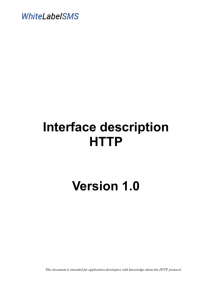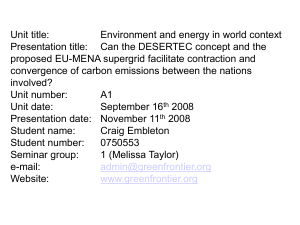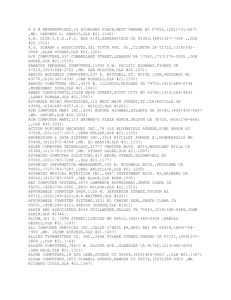HSBC Rail Business Awards
advertisement
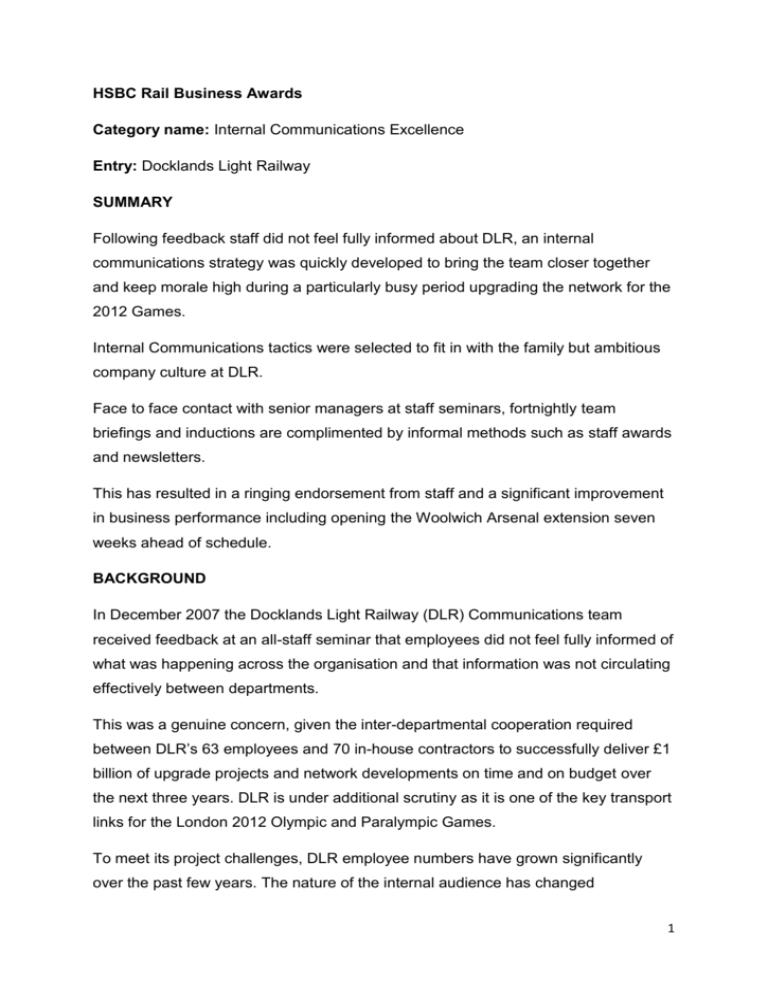
HSBC Rail Business Awards Category name: Internal Communications Excellence Entry: Docklands Light Railway SUMMARY Following feedback staff did not feel fully informed about DLR, an internal communications strategy was quickly developed to bring the team closer together and keep morale high during a particularly busy period upgrading the network for the 2012 Games. Internal Communications tactics were selected to fit in with the family but ambitious company culture at DLR. Face to face contact with senior managers at staff seminars, fortnightly team briefings and inductions are complimented by informal methods such as staff awards and newsletters. This has resulted in a ringing endorsement from staff and a significant improvement in business performance including opening the Woolwich Arsenal extension seven weeks ahead of schedule. BACKGROUND In December 2007 the Docklands Light Railway (DLR) Communications team received feedback at an all-staff seminar that employees did not feel fully informed of what was happening across the organisation and that information was not circulating effectively between departments. This was a genuine concern, given the inter-departmental cooperation required between DLR’s 63 employees and 70 in-house contractors to successfully deliver £1 billion of upgrade projects and network developments on time and on budget over the next three years. DLR is under additional scrutiny as it is one of the key transport links for the London 2012 Olympic and Paralympic Games. To meet its project challenges, DLR employee numbers have grown significantly over the past few years. The nature of the internal audience has changed 1 considerably to include a number of consultants and temporary contractors who work for the organisation on a short or long-term basis. Some departments have a particularly high proportion of these employees. Jonathan Fox, DLR Director, and the DLR Communications team recognised the need for an internal communications programme to increase the exchange of knowledge between departments, improve productivity and ensure timely project completion, particularly in the lead-up to the Games. While DLR employees received some internal communications via parent companies Transport for London (TfL) and London Rail, it was clear an internal communications strategy was required specifically to meet the needs of the local organisation. Accordingly DLR built additional capacity into the Communications team by appointing an Internal Communications Executive who reports to the DLR Publicity and Stakeholder Manager. A core work area for the Internal Communications Executive was to carry out a communications audit and develop an internal communications strategy and programme. DLR culture DLR has a unique organisational culture: although it is growing, it maintains a ‘small firm’ mentality. Additionally the organisation has a mixture of public and private sector qualities; DLR operates within a government environment yet many staff believe it functions with the efficiency and acumen of a commercial business. As one staff member commented during a recent seminar, “DLR gets in and gets things done.” At times the communication needs of permanent staff and consultants/contractors do differ, e.g. TfL HR-related messages may not be relevant to all staff. However, DLR prides itself on ensuring consultants/contractors are not overlooked in internal communications processes, such as induction programmes. Encouragingly, staff feedback indicates that most consultants/contractors feel very much a part of DLR and are treated as ‘valued employees’. Ongoing staff research demonstrates that employees welcome opportunities to get to know colleagues and value their role in helping to regenerate East London and build a key transport link for the 2012 Games. 2 The internal communications programme was seen as a key tool to maintain and enhance the DLR culture. INTERNAL COMMUNICATIONS STRATEGY Strategic Aims The internal communications strategy comprises the following aims: maintain a positive and inclusive organisational culture where employees understand and are committed to the organisational vision and business goals reinforce the ‘family culture’ of DLR ensure all new starters receive an appropriate induction improve information sharing deliver timely, relevant and accurate messages celebrate business successes together and promote team members’ contributions to ‘building a better railway’ encourage participation in business decisions and build opportunities for twoway communication effectively support staff in delivering internal messages and coordinating staffrelated communications. Strategic Objectives The following internal communications objectives have been established: Improve the communications flow (upward, downward and laterally) throughout the organisation, via a coordinated approach and use of two-way communication channels. Ensure staff understand and are committed to the organisational direction and that internal messages are regularly linked to corporate objectives, goals and 3 vision. Provide regular, timely and accessible information to employees using channels to celebrate organisational successes and profile staff achievements. Enhance team interaction and encourage effective cross-team working. Key Messages To ensure a holistic and cohesive approach, key messages promoted to external audiences are incorporated across all employee communications, namely that DLR: is committed to the communities in which it operates and is a major player in the regeneration of East and South East London is focused on delivery and performance delivers on time and on budget collaborates closely with its key partners and prides itself on proactive and inclusive consultation. will play a key role in the London 2012 Olympic and Paralympic transport network is a fun and inclusive place to work, where everyone is treated as part of the DLR ‘family’ staff are empowered and supported to make decisions. 4 EXECUTION A mixture of formal and informal communication channels have been introduced to help implement the aims and objectives. This was underpinned by the launch of an internal brand – Inside DLR – to be used across the channels. Emphasis was placed on striking a balance between fun, informal communications in addition to more formal mechanisms that could carry senior management messages. Inside DLR – newsletter One of the cornerstones of the Inside DLR brand is an internal newsletter of the same name. The newsletter includes an eye-catching cut-out cover which, quite literally, gives a closer look at DLR staff in the form of a ‘Rogues Gallery’ photo montage on page three. DLR employees are encouraged to submit their own articles, features and photographs, resulting in a light-hearted snapshot of the individuals who make the DLR such a success. Each edition includes a staff address from Jonathan Fox and regular instalments such as ‘Celebrity look-a-likes’, ‘Holiday postcards’ and a ‘Spotlight on…’ interview, allowing employees to show their creativity and share some of their personal thoughts and experiences. The newsletter has been key to the development of the internal communications programme. Since it started in 2007, it has grown from a simple-page foldout leaflet to an eight-page booklet with dedicated features that is highly regarded by staff*. Once staff know that an issue is in production they are asked to volunteer photos, stories and other anecdotes for inclusion. Notice boards Employee notice boards are produced every month and split into two sections. The first half features current performance data, passenger statistics and developments across the railway. The other is left blank for employees to pin up formal and informal departmental news. Each of the eight departments have their own notice board and adorn it accordingly. 5 Electronic screens Plasma information screens have been installed in the two DLR kitchens to offer a medium where DLR information can be immediately displayed and changed quickly. Photographs, animations, diagrams and headline information is used to capture people’s attention. Monthly staff site visits The Internal Communications Executive organises a monthly staff visit to the site of one of DLR’s current projects. Regularly over-subscribed, they provide first-hand insight into a project and an opportunity to exchange ideas. Staff seminar Every two months all DLR staff are invited to a staff seminar which is held over an extended lunchtime period. A buffet lunch is provided to give staff the opportunity to network and develop relationships outside of the workplace. After this, several presentations, focussing on current challenges or recently completed projects, are given by DLR staff. This is seen as a key forum to publicise departmental challenges and successes and encourage best practice. Team talk Every fortnight Jonathan Fox updates the organisation on key issues and developments. This is then supplemented by briefings from each department. Rather than the Heads of Department each giving the update each time, different people are required to give updates on different occasions. Email bulletins Fortnightly email bulletins summarise project updates, forthcoming targets and staff announcements. Induction In addition to a standard formal induction, the company welcome is accompanied by 6 a rather different introduction as an employee handbook – the A-Z Survival Guide to the DLR - has been developed to give new staff an insight into the railway and a sense of its unique company culture. The guide contains important but often overlooked information which can really help people feel welcome and integrate with the team, such as where to go for lunch, popular venues for after work drinks, and more practical items such as the location of the stationery cupboard. Signs and stationery The Inside DLR logo is used across a range of in-house collateral including stationery, milestone calendars, screensavers, desk wobblers and hanging signs. Staff Awards At the 2008 staff Christmas seminar the DLR Staff Awards were introduced to celebrate a range of light-hearted employee achievements, such as Best Celebrity Lookalike and Best Cake Scavenger. Milestones To maintain morale during this critical period, DLR actively recognises the delivery of key milestones. In addition to Jonathan Fox sending an email to congratulate specific teams and individuals for a job well done, and referencing in the above communications tools, celebratory cakes and fruit are provided for all staff. EVALUATION AND MEASUREMENT Staff survey At a recent staff seminar, 63 of the 66 staff and contractors who attended completed a questionnaire rating the effectiveness of the internal communications programme. 100 per cent of employees agreed that the Inside DLR newsletter is an effective internal communications channel while 98.3 per cent of staff agreed that there is a positive working atmosphere at DLR. 85.6 per cent agreed that internal communications has improved since late 2007 (the remainder were ‘not sure’ 7 because they had joined the organisation too late to comment) and 74.5 per cent consider the notice boards to be a successful communications tool. The following comments are typical of a number received: “I think that the internal comms is excellent. I have never worked at an organisation with such a sense of community.” “Overall, a good balance of different forms of communication without a complete overload.” “Internal comms have greatly improved and this is a tribute to the staff concerned.” Major projects Since the programme was introduced, DLR’s award-winning £180m Woolwich Arsenal extension opened in January, seven weeks ahead of schedule and on budget. A £13m Tower Gateway Station refurbishment was completed in March, two months ahead of schedule and similarly on budget. DLR is currently involved in several other multi-million pound projects that are running to schedule and cost. Staff feedback In addition to the early completion of projects, the enthusiasm of DLR staff for the campaign is illustrated by the sheer volume of suggestions submitted for each edition of the newsletter. The internal communication materials have been seamlessly incorporated into everyday life for DLR employees who look forward to the latest updates. ‘The internal communications programme has exceeded all our initial expectations. As the results of our staff survey demonstrate, DLR employees have fully embraced the various internal communication tools introduced, which have in turn made a significant contribution to improving morale, motivation and the overall understanding of the organisation. ‘I am delighted with the success of the programme, which is now firmly embedded within DLR and will help us to meet the considerable challenges we face over the coming years.’ 8 Jonathan Fox, DLR Director 9

